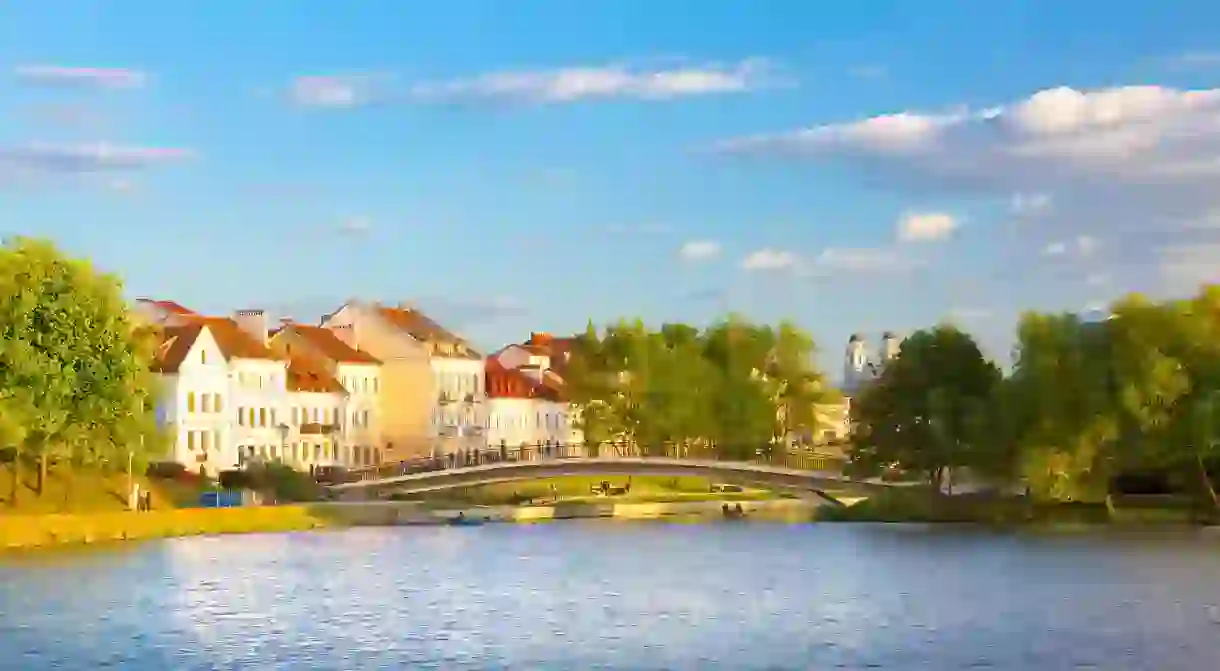Intriguing Facts About Belarus

When Belarusians travel around the world and introduce themselves, many people they meet scratch their heads over where Belarus even is. However, Belarus is a fascinating country, with beautiful villages, primeval forests and a friendly, hospitable culture awaiting visitors. Here are some interesting facts you need to know about this incredible country.
Did you know – Culture Trip now does bookable, small-group trips? Pick from authentic, immersive Epic Trips, compact and action-packed Mini Trips and sparkling, expansive Sailing Trips.
Belarusians are extremely hospitable
Belarusians are known for their modesty, kindness and hospitability. Everybody is eager to offer help to tourists and visitors (except perhaps some moody salespeople in tiny village stores).
It’s got an ancient fairy-tale forest
The biggest old-growth European forest – Belovezhskaya Pushcha – is situated in Belarus. Home to European bison and hundreds of other animals and birds, Belovezhskaya Pushcha is all that remains of the primeval forest that once stretched across the vast European Plain. Some oak trees growing in this forest are more than 600 years old. However, Belovezhskaya Pushcha is noteworthy for more than just its age – on December 8, 1991, the leaders of Belarus, Russia and Ukraine signed the agreement for the dissolution of the Soviet Union in a hunting lodge in the forest.
Russian language prevails in communication
Both Belarusian and Russian are considered official languages, but only around 10% of citizens use Belarusian in everyday communication. Many inhabitants speak trasianka – a mixture of Belarusian and Russian.
There’s beauty all around
In Belarus, wandering around a quaint village is a colourful experience, with small wooden houses painted in bright colours and featuring artfully carved windows, a common sight here.
Belarusians take cleanliness seriously
It’s pretty hard to find rubbish on Belarusian streets – cleanliness prevails everywhere from the largest town to the smallest village. This can be explained by the abundance of trash bins, which are diligently used by citizens and the country’s many street cleaners.
Potatoes are a dietary staple

Potato is considered the second bread in Belarus. Locals can cook an incredible choice of over 100 dishes from this humble vegetable, and draniki – a potato pancake – is one of the most famous specialities. Belarusians consume more potatoes per head than any other country – an estimated 180kg, which amounts to around half a kilogram a day. Belarusian scientists often invent new types of potato, varying in taste, colour and size.
It’s the perfect place for treasure seekers
It’s said that Belarus may have the largest amount of buried treasure in Europe hidden beneath its earth, due to the countless wars that have occurred on its territory.
Belarusians get double holidays
Orthodoxy and Catholicism coexist in Belarus as two established religions. In light of this, both Catholic and Orthodox Christmas and Easter are celebrated as national holidays.
Their flag refers to their landscape
Nearly half of Belarusian territory is made up of forests – this fact is symbolised by the green stripe on the country’s flag. Belarus is sometimes called the ‘Lungs of Europe’ for its countless forests, rivers and lakes, so if you’re a fan of exploring beautiful natural landscapes, Belarus is the place for you.
You’ll never leave a Belarusian home hungry
If you visit a local family, make sure you’re hungry as more likely you’ll be offered all the food they have in the fridge. After the feast of the main meal, it’s traditional to offer guests cups of black or green tea with sweets to finish. If that wasn’t enough, the female of the household will present you with even more food to take with you on your journey home.
They’ve got an amazing selection of sweets
Belarus is famous for its variety of sweets, both authentic Belarusian and those from the Soviet era. Zephyr, chocolate candies, glazed cranberry, sguschenka and glazed curd bars are popular among residents and guests from neighbouring countries. Zephyr is a sweet similar to a marshmallow and is made from apple puree, berry puree, and egg whites and sugar. All this is then coated in a delicious milk chocolate. Belarusian sguschenka – a sweet condensed milk – is also very tasty. Two cities, Rogachev and Glubokoye, compete in producing this product, with Belarusians split into two groups: those who like sguschenka from Rogachev and those who prefer sguschenka from Glubokoye.
<img class=”wp-image-1847827 size-medium” src=”https://theculturetrip.com/wp-content/uploads/2018/02/sweets-850×1280-432×650.jpg” alt=”Belarusian sweets | ©
They’ve made their own mountains
Although Belarus is a country with no natural mountains, it has impressive artificial salt mountains that have been formed by mining for rock salt. These can be seen particularly in the areas near the city of Soligorsk.

Belarusians have achieved international greatness
Belarus is filled with Nobel Prize winners. Among them are Simon Kuznets, who was awarded the Nobel Prize in Economic Sciences in 1971, and Zhores Alferov, who won the Nobel Prize in Physics in 2000. There are also two Nobel Peace Prize winners – Shimon Peres, who won in 1994, and Menachem Begin, who won in 1997. However, perhaps the most notable is Svetlana Alexievich, who became the first woman from Belarus to win a Nobel Prize after she was awarded one in 2015 for her services to literature.













